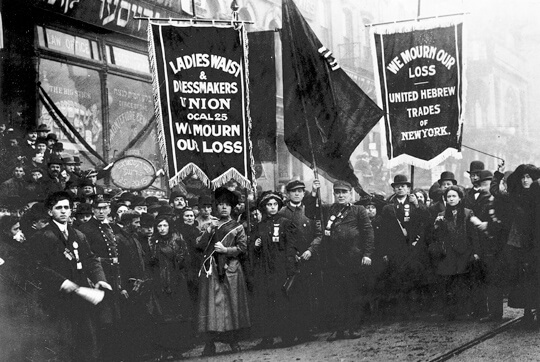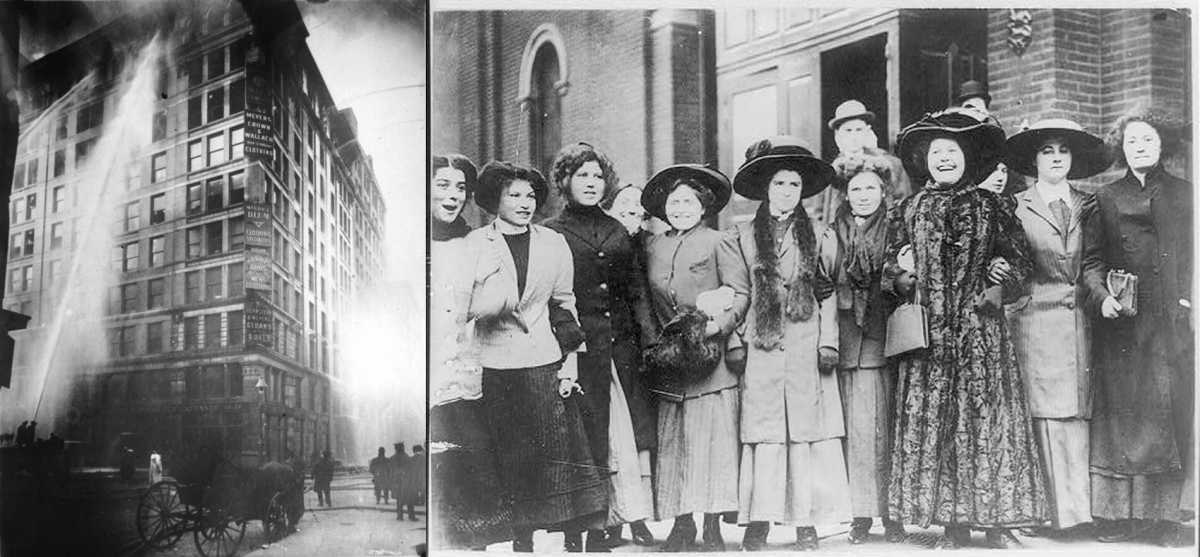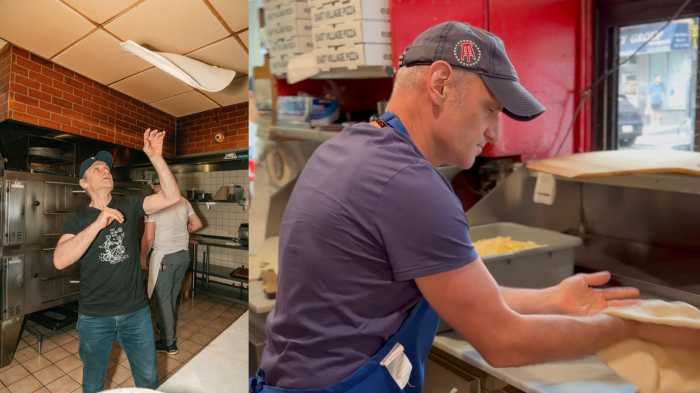A new limited-run podcast is taking a look at the events of the Triangle Shirtwaist Factory fire through the eyes of two young women who survived the deadly blaze.
On March 25, 1911, a fire broke out in a scrap bin under a worker’s table inside the Asch building in Greenwich Village at 4:40 p.m. The alarm sounded at 4:45 p.m., and the fire began to spread throughout the building’s 8th, 9th and 10th floors. With only one fire escape in the factory, several workers were trapped in the building, while the owners were able to escape with their families.
The fire was brought under control 18 minutes later but the damage had already been done, with 146 workers — 23 women and girls and 23 men — who had died in the fire, with many of the victims being young female immigrants between the ages of 14 and 23 years old. Many of the victims died of the fire, smoke inhalation, or falling/jumping to their deaths.
The building, now called the Brown building, is a part of NYU’s campus and has been recognized as a New York City landmark. The 110th anniversary of the fire is this year, and historical fiction writer and New Yorker Hope Tarr felt it was necessary to share the story from a new perspective.
“I used to live in the Union Square area, near the Brown Building. I had known about the fire in general terms, but I went in 2011 to a friend who invited me to tag along to the centennial anniversary service at Washington Place,” said Tarr. “I was so moved — captivated not the right word, but the workplace justice issues important to me. I have relatives in the garment industry, and my aunt was a card-carrying member of the International Ladies Garment Workers Union (ILGWU), the union that fought for reform after the fire, so it runs deep in my DNA.”
Tarr had already started researching the fire for a book she was writing, but had so much information that she wanted other ways to tell this story. Tarr partnered with Fin Dwyer, of the Irish History Podcasts, to put together a limited podcast series centered around the Triangle Shirtwaist Factory fire.
“I thought he was sharp and had an interesting perspective on workplace issues,” said Tarr. “He is Ireland-based and had never heard of the fire, which is unusual to us in New York. I talked to him about the research I had done. Three years and 3,000 miles later, we launched just in time of the 110th anniversary.”
The limited-run podcast looks at the fire from the perspective of two young women who survived the ordeal: Celia Walker, an immigrant from Poland, and Annie Doherty, an immigrant from Ireland.
“We chose to look at the lens of two women workers because we felt like if we tell the story, we should be elevating the voices of the people who worked there rather than us talking about how we feel about it,” said Tarr. “We thought it was really important to have these voices. We were fortunate that we had first-hand accounts, like newspaper coverage. We had these very interesting immigration stories, and we wanted to look at two women who had different backgrounds whose lives converged on the floor.”
Walker came to the United States when she was 7 years old and lived with her family in the Lower East Side. Doherty came to the United States in her 20s and was living not too far away in the Hell’s Kitchen area. Tarr says that the two would not likely have overlapped outside of work due to their different communities they were raised in.
“When you look back at historic records, you’d see that [Walker] was here so long, she was like a real Yankee. Annie was older and had a heavy Gaelic accent, and you could see how this plays out with opportunity,” said Tarr. “Walker would rise to become a quality control inspector — if cuffs looked crooked, she would send it back to the floor. Annie doesn’t blend in, she’s a sewing machine operator in the factory. Despite living very close to each other, these women never would have met if it weren’t for work.”
Tarr says the while fires were commonplace in the industry, the Triangle Shirtwaist Factory fire was completely preventable. In the aftermath of the fire, the ILGWU, the first women-led union, worked to create workplace reforms in these factories. Prior to the 1911 fire, in November 1909, the union staged the Uprising of the 20,000, where women did a huge walkout right before the launch of the spring fashion line of that year in an effort for better workplace conditions. The events of the fire ignited the union to work harder for more reforms.

Tarr notes that the garment industry at that time was around 40% of all industry in the city, and with the constant influx of immigrants coming into the country, the owners of the Asch Building, Max Blanck and Isaac Harris, were able to hire them at low wages.
“That’s what happens when labor is cheap, people are taken advantage of,” said Tarr. “[The owners] didn’t do the things they were supposed to, like practice fire drills and install sprinklers. They locked the doors during work hours because they thought people would take unauthorized breaks. It feeds into the idea of ‘immigrants, we can’t trust them.’ It makes me passionate about history, it’s so cyclical — the more they change, the more they stay the same. Over the past 4 years, we had a president say that all Mexicans are rapists and are bad hombres. We had an election where fortunately we had change, but 74 million said that was okay. I guess it begs the question of how much has changed?”
Statistically, the Triangle Shirtwaist Factory fire was the deadliest workplace disaster in the city until the 9/11 terrorist attacks in 2001. Tarr hopes that those who tune in will be able to start to connect the incident with the people who died in the fire, rather than seeing it as just a statistic.
“That’s so sad, but the individual people get lost in stats. Because we chose to look at this from point of view of two survivors, those 146 dead they are not a statistic — they are someone’s mom, sweetheart, lover, auntie,” said Tarr. “After the fire, they found 14 melted engagement rings from young women looking to getting married and leaving the factory. The Brown building has been a part of NYU, and all college students are about the age of workers in the factory. We need to see it as impacting real people and not just statistics. It’s too easy to hold this and lesson at an arm’s length.”
All three episodes of the podcast are available for listening, the first on the Irish History Podcast website and Acast, and the second and third on Acast. For information about Tarr, visit www.hopectarr.com.
Listen to the podcasts below:






































